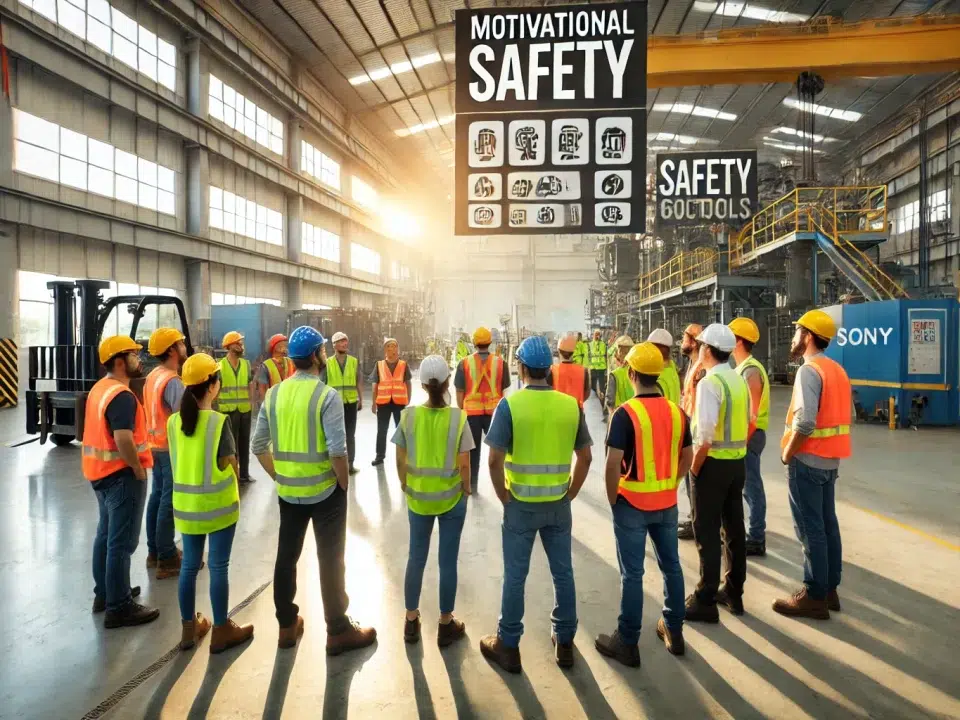Quantitative Risk Assessment Study in chemical industry

Prestartup Safety Review Study
September 4, 2023
Ergonomics Assessment
September 6, 2023Picture this: a chemical plant bustling with activity, where complex processes are constantly in motion. In this dynamic environment, the potential for accidents and incidents is ever-present. The question arises: how can we effectively manage and mitigate these risks? This is where Quantitative Risk Assessment (QRA) comes into play.
In this article, we delve deep into the world of Quantitative Risk Assessment in the chemical industry. We explore its fundamentals, step-by-step methodologies, and real-life applications. By the end of this journey, you will not only have a comprehensive understanding of QRA but also gain valuable insights into how it helps ensure safety and optimize operations in chemical plants.
Understanding the Importance of Quantitative Risk Assessment in the Chemical Industry
In the dynamic world of the chemical industry, where innovation and progress go hand in hand, ensuring safety is paramount. This is where Quantitative Risk Assessment (QRA) plays a pivotal role. QRA provides a systematic and scientific approach to evaluate and manage risks associated with chemical processes, making it an indispensable tool for companies operating in this sector.
QRA enables organizations to identify potential hazards, assess the likelihood and consequences of accidents, and quantify risks using data-driven methodologies. By undertaking a comprehensive QRA study, chemical companies can gain valuable insights into their operations’ vulnerabilities and work towards implementing effective risk management strategies. Not only does this help protect personnel working within these facilities, but it also safeguards communities surrounding them.
The Fundamentals of Quantitative Risk Assessment
Quantitative risk assessment (QRA) is a systematic approach used to evaluate and quantify potential hazards, prioritize risks, and develop effective risk management strategies in the chemical industry. This crucial process helps organizations make informed decisions, allocate resources efficiently, and ensure the safety of workers, the public, and the environment.
At its core, QRA involves three primary components: hazard identification, probability assessment, and consequence analysis. Hazard identification entails identifying potential sources of danger within a chemical facility or process. Probability assessment involves determining the likelihood of specific events or incidents occurring that could lead to accidents or harm. Consequence analysis focuses on evaluating the severity and impact of these events on human health, property damage, and environmental integrity.
Step-by-Step Guide to Conducting a Quantitative Risk Assessment Study
Embarking on a quantitative risk assessment (QRA) study in the chemical industry requires meticulous planning and systematic execution. This step-by-step guide will outline the essential stages involved in conducting a comprehensive QRA study, ensuring that potential risks are identified, assessed, and addressed effectively.
Gathering Essential Information: To initiate the QRA study, it is crucial to collect relevant data regarding the chemical processes, equipment, and potential hazards present. This includes obtaining information on material properties, process conditions, safety systems employed, and incident history. By gathering accurate and extensive data at this stage, you establish a strong foundation for subsequent risk assessment steps.
Identifying and Evaluating Potential Hazards: The next critical phase involves identifying potential hazards associated with the chemical processes under investigation. This entails analyzing process flow diagrams, system schematics, and operational procedures to identify potential failure points or deviations that could lead to incidents. Through a comprehensive evaluation of inherent hazards such as toxic releases or fire/explosion risks, you gain insights into the specific threats posed by each operation.
Assessing Likelihood and Consequences of Risks: Once identified, it is necessary to assess both the likelihood of occurrence and potential consequences of each identified risk scenario. Probability estimates are derived by considering historical accident data or utilizing expert judgment within specific domains. Simultaneously determining consequence severity involves evaluating various factors such as human health impacts, environmental consequences, or economic losses stemming from an incident. By combining these assessments quantitatively through methods like fault tree analysis
Data Collection and Analysis: Gathering Essential Information
Gathering essential information is the cornerstone of any comprehensive quantitative risk assessment study in the chemical industry. This crucial step involves collecting data from various sources, including historical records, incident reports, and expert opinions. The process requires meticulous attention to detail as well as an understanding of the specific hazards and processes involved.
One key aspect of data collection is conducting thorough site inspections to identify potential risks and hazards. Skilled professionals must meticulously examine the facility, equipment, and processes to ensure a complete understanding of all factors that could contribute to potential incidents. Additionally, interviews with employees at all levels of the organization can provide invaluable insights into day-to-day operations and uncover potential risks that may otherwise go unnoticed.
Identifying and Evaluating Potential Hazards
In the realm of chemical industry, identifying and evaluating potential hazards is an essential step in conducting a comprehensive quantitative risk assessment study. It involves a meticulous examination of all elements that could pose a threat to human health, safety, and the environment. A proactive approach is crucial in order to identify any potential hazards before they can escalate into catastrophic incidents.
During this stage, experts meticulously analyze various factors such as the properties of chemicals involved, process conditions, equipment vulnerabilities, and any external factors that might contribute to hazardous situations. This analysis takes into account not only the obvious risks but also those that might be hidden or go unnoticed at first glance. By scrutinizing every aspect of operations and processes within the chemical facility, potential hazards can be properly identified and evaluated with utmost precision.
Assessing the Likelihood and Consequences of Risks
Once potential hazards have been identified, the next crucial step in conducting a quantitative risk assessment study in the chemical industry is to assess the likelihood and consequences of these risks. This phase involves a comprehensive analysis that takes into account various factors, including historical data, expert opinions, and mathematical models.
In assessing the likelihood of risks, experts consider a range of variables such as process complexity, equipment reliability, human error probabilities, and external factors like weather conditions. By carefully analyzing these factors and assigning appropriate probabilities to each potential hazard occurrence, an accurate understanding of risk likelihood can be achieved. This knowledge allows for informed decision-making when it comes to implementing risk mitigation measures.
Conversely, assessing the consequences of risks involves evaluating the potential impact on human health, environment, property damage, production disruption, financial loss or any other relevant aspects. This evaluation requires a deep understanding of chemical properties and behavior under different scenarios as well as an awareness of regulatory requirements and industry standards. By quantifying both the likelihood and consequences of risks associated with specific hazards within an operation or facility setting, organizations can prioritize their efforts towards those areas that demand immediate attention.
The process of assessing risks might initially seem daunting; however it serves as a vital tool for companies to proactively address potential issues before they escalate into significant incidents. Ultimately this approach enables businesses in the chemical industry to not only safeguard their employees but also protect surrounding communities and environments while maintaining efficient operations.
Quantifying and Ranking Risks: Probability and Severity Assessment
Once potential hazards have been identified and evaluated, the next step in conducting a quantitative risk assessment study in the chemical industry is to quantify and rank these risks based on their probability and severity. This critical process allows for a more comprehensive understanding of the potential impact of each risk, enabling informed decision-making regarding risk mitigation strategies.
Probability assessment involves evaluating the likelihood of an incident occurring, taking into account various factors such as historical data, expert opinions, and empirical evidence. By assigning probabilities to different scenarios, ranging from highly unlikely to almost certain, a clearer picture emerges regarding which risks require immediate attention.
Severity assessment focuses on determining the potential consequences or impacts of each risk. It involves considering factors like human health effects, environmental damage, financial losses, and reputational harm. By assessing severity levels on a scale that encompasses minor incidents to catastrophic events, organizations can prioritize their efforts towards addressing high-severity risks.
The combination of probability and severity assessments allows for the ranking of risks in order of importance. This ranking provides valuable insights into which risks pose the greatest threat to operations or public safety. Armed with this knowledge, organizations can allocate resources effectively towards implementing targeted risk management measures that ensure optimal safety while promoting growth and success.
Developing Risk Mitigation Strategies: Controlling and Preventing Incidents
When it comes to managing risks in the chemical industry, developing effective strategies for mitigating potential incidents is of utmost importance. This crucial phase involves a meticulous analysis of identified risks and the implementation of proactive measures to minimize their occurrence or impact. By adopting a comprehensive approach that combines technological advancements, operational protocols, and employee training, companies can significantly reduce the likelihood of accidents while promoting safety and sustainability.
One essential aspect in developing risk mitigation strategies is the integration of state-of-the-art engineering controls. These controls encompass advanced safety systems such as automated shutdown mechanisms, pressure relief devices, and fail-safe technologies. By employing these engineering marvels, chemical facilities are equipped with robust safeguards that act swiftly in response to any abnormal condition or hazard. Such initiatives bolster reliability and instill confidence not only among employees but also within neighboring communities who trust in the commitment of these organizations towards their well-being.
Putting the Results into Action: Implementing Effective Risk Management Plans
Once a comprehensive quantitative risk assessment study has been conducted in the chemical industry, it is crucial to translate the findings into actionable risk management plans. This section delves into the practical steps that need to be taken to ensure a safe and secure working environment.
The first step in implementing effective risk management plans is to prioritize the identified risks based on their probability and severity. By assigning numerical values to these risks, organizations can focus their resources on tackling high-risk areas while still addressing moderate and low-risk concerns. This approach allows for efficient allocation of time, funds, and manpower.
After prioritization, it is imperative to develop risk mitigation strategies tailored to each specific hazard. This may involve implementing engineering controls, such as installing safety equipment or modifying processes, as well as administrative controls like training programs and standard operating procedures. The goal is to minimize or eliminate potential risks through a combination of preventive measures.
In order for risk management plans to be successful, they must be supported by clear communication channels within the organization. Open dialogue between management and employees fosters a culture of safety where everyone feels comfortable reporting potential hazards or suggesting improvements. Regular audits and inspections help ensure that implemented measures are functioning effectively.
An optimistic spin on this topic lies in recognizing that by proactively addressing risks through effective risk management plans, organizations can safeguard not only their employees but also their reputation and profitability. Furthermore, an emphasis on continuous improvement demonstrates commitment towards fostering an environment where accidents are minimized while productivity thrives.
Real-Life Examples: Successful Applications of Quantitative Risk Assessment in the Chemical Industry
In the realm of chemical industry, numerous noteworthy success stories stand as testaments to the effectiveness of quantitative risk assessment (QRA) in ensuring safety and minimizing potential disasters. One such example is a large-scale petrochemical plant that implemented QRA methodologies to identify and address potential risks throughout their operations. By meticulously analyzing their processes, collecting data on historical incidents, and conducting comprehensive hazard assessments, they were able to develop robust risk management strategies.
Through the diligent use of QRA, this petrochemical plant achieved a significant reduction in accidents and incidents over time. By quantifying risks associated with hazardous materials handling, equipment failure, and process deviations, they were able to prioritize mitigation efforts. This not only improved safety for workers but also protected surrounding communities from potential harm. The implementation of preventative measures like enhanced training programs, stricter maintenance protocols, and state-of-the-art monitoring systems further contributed to their success.
Conclusion
In conclusion, the implementation of quantitative risk assessment in the chemical industry is pivotal for ensuring the safety and well-being of both workers and the surrounding environment. By meticulously analyzing potential hazards, evaluating risks, and implementing robust risk management strategies, companies can effectively mitigate incidents and safeguard against catastrophic events. This systematic approach not only minimizes the chances of accidents but also creates an atmosphere of trust and confidence among stakeholders. As we continue to refine our understanding of risk assessment methodologies, we can look forward to a future where the chemical industry operates with utmost responsibility, prioritizing safety above all else.




